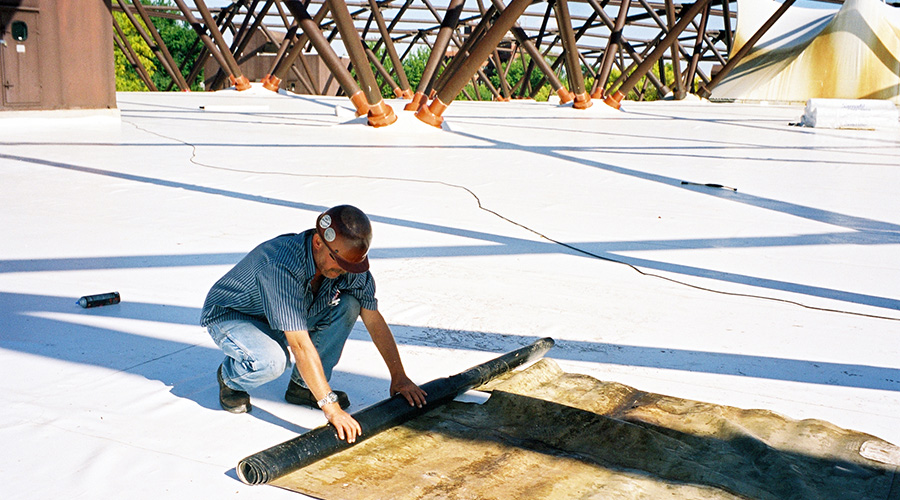Roadblocks to Single-Ply Roofing Maintenance
Most managers intuitively know a maintenance program for a single-ply roof can be a cost-effective, efficient strategy to extend roof life. So why do so few managers implement such a program? Generally, there are three reasons:
Out of sight, out of mind. This old adage often applies to roof maintenance. Department workers are busy and have many responsibilities. If the roof is not leaking or is not harming the facility or its occupants, it is one less item to worry about.
Warranties. The growing practice of using a roof warranty's length to differentiate single-ply roof membranes has driven the standard 10-15 year warranty period of a decade ago to a 20-30 year warranty period today. This increased focus on warranty length can give managers a false sense of security. Many managers believe the warranty will take care of any problems related to a new roof during the length of the warranty period.
But what they often fail to understand is that while the warranty might cover material and labor, depending on the warranty type, it typically requires the manager to conduct and document roof maintenance. If managers fail to complete the maintenance, the manufacturer can void the warranty.
Funding. Repairing and maintaining a roof is inexpensive compared to the cost of premature roof failure. Premature failure can lead to additional financial and health risks associated with facility downtime, damaged materials and components, structural damage, and claims related to mold and mildew. When budgeting, managers need to consider using a life-cycle cost model to evaluate the benefits of roof maintenance. The model should weigh projected maintenance costs against the anticipated increase in roof service life and the financial risks associated with premature failure.
Maximizing Performance
The best time to develop a maintenance program for a single-ply roof is during the design phase of a project. The type of roof system that is designed and installed will affect the amount and type of future maintenance.
Consider two buildings. One is a manufacturing plant covered with process piping, ammonia lines, and mechanical equipment on the roof. The other is a wide open warehouse. Would the roof system's design on these different facilities affect the amount and type of future maintenance? Absolutely.
Imagine the damage, repair, and maintenance required on the plant if the roof were installed without a thicker, more durable membrane, a high-density insulation coverboard, and membrane protection pads around mechanical equipment. In this example, roof design can significantly affect roof performance and maintenance costs.
Related Topics:














